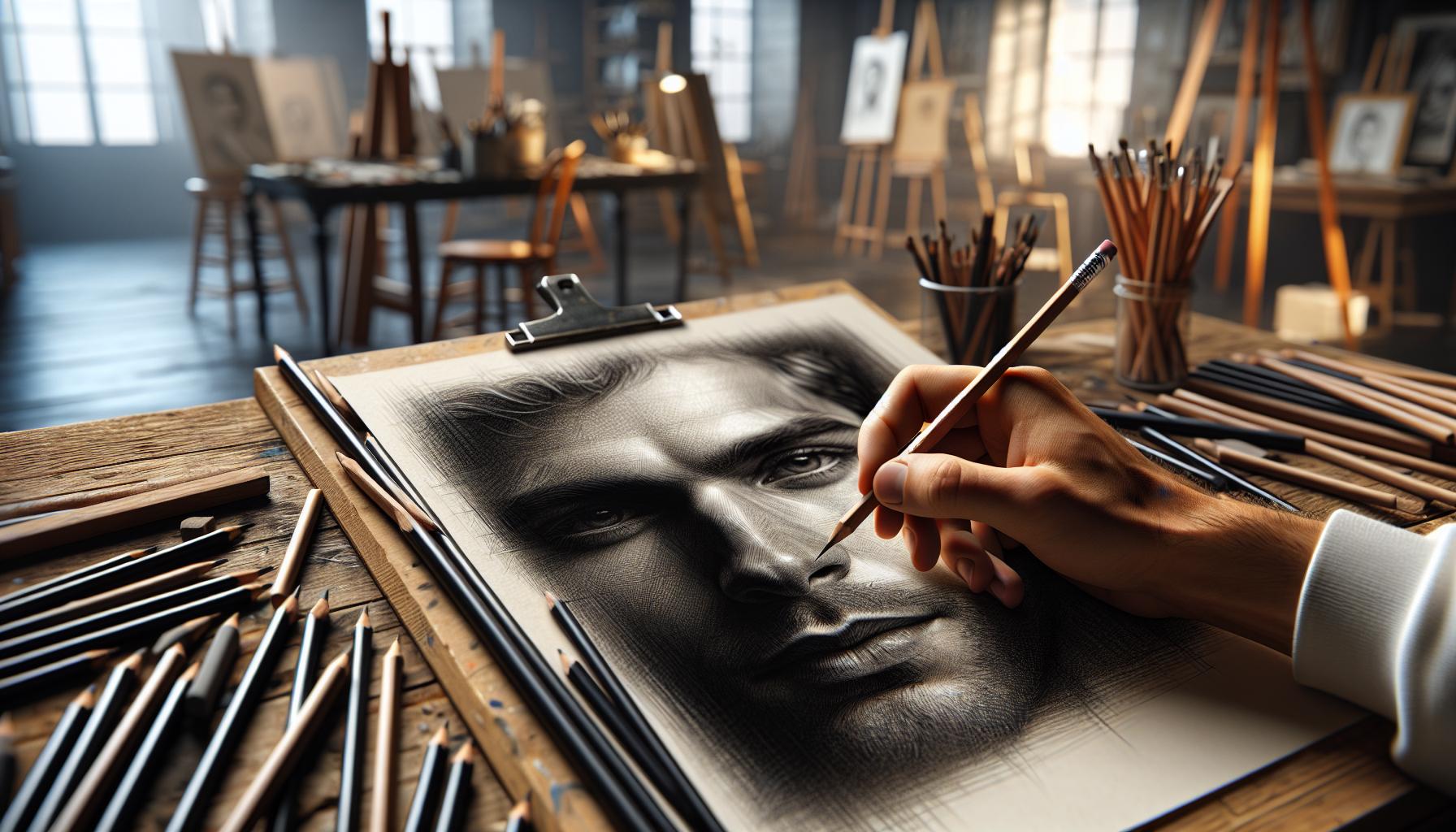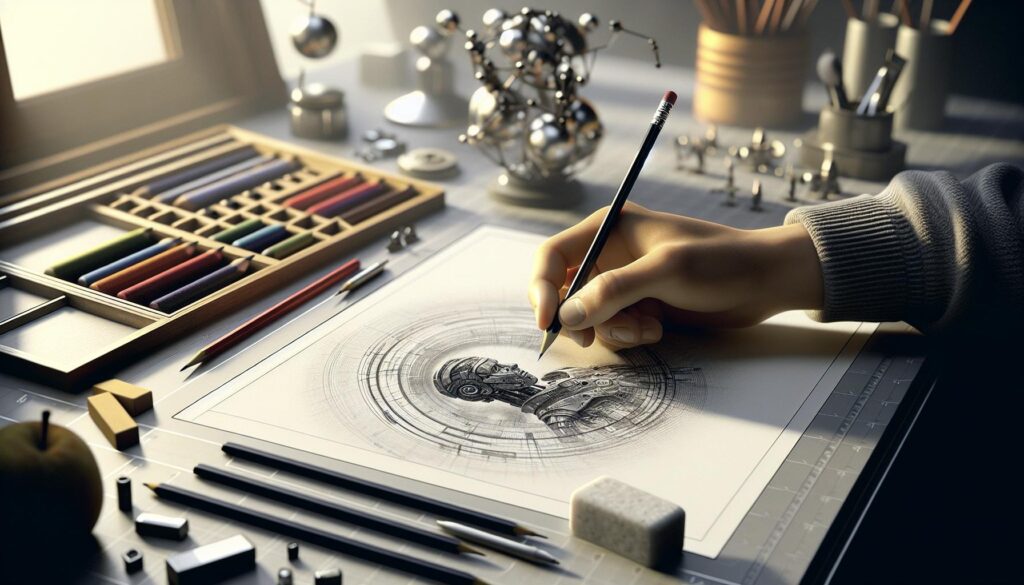Drawing with pencils opens up a world of artistic possibilities, and it doesn’t have to be complicated. Whether you’re a complete beginner or someone looking to refine their skills, mastering easy pencil drawings can be both rewarding and enjoyable.
From simple doodles to more complex sketches, pencil art has captivated artists and enthusiasts for centuries. Today’s aspiring artists can discover countless techniques and shortcuts to create stunning drawings without years of formal training. With just a basic pencil and paper, anyone can transform their creative ideas into beautiful works of art.
Facil:ekagqaf3ivu= Lapiz:fs01uvzcddy= Dibujos
Pencil drawing techniques form the foundation of artistic expression through graphite. These fundamental skills enable artists to create depth, texture, and dimension in their artwork.
Holding Your Pencil Correctly
Pencil grip determines the level of control and variety of marks an artist creates on paper. The writing grip works for detailed sections, keeping the pencil at a 45-degree angle between thumb and forefinger. Artists switch to an overhand grip by holding the pencil further back for shading larger areas, creating broad strokes with the side of the lead. A loose grip allows natural arm movement from the shoulder rather than restricting motion to the wrist, producing smoother lines and preventing hand fatigue.
Essential Pencil Strokes
Basic pencil strokes create distinct textures and effects in drawings. Hatching involves parallel lines drawn in a single direction to build shadows and depth. Cross-hatching adds a second layer of lines at an angle to create darker values and richer textures. Circular strokes produce smooth, even shading ideal for organic forms and portraits. Stippling uses dots of varying density to create gradients and texture. Contour lines define edges and shapes through single, continuous strokes that follow the form’s natural curves.
Simple Drawing Projects for Beginners

Starting with easy drawing projects builds confidence and develops fundamental skills. These beginner-friendly exercises focus on mastering basic shapes and observing natural elements.
Basic Geometric Shapes
Simple geometric shapes form the foundation of all drawing skills. Artists start with basic circles squares triangles rectangles to understand spatial relationships form. The practice involves drawing perfect circles in one continuous motion repeating the exercise 20 times per session. Creating straight lines without rulers develops hand control through parallel line exercises spaced 1 inch apart. Combining shapes generates more complex forms like cubes cylinders cones by adding perspective lines. A daily 15-minute shape practice routine strengthens muscle memory accuracy proportion skills.
Nature Sketches
Natural objects offer ideal subjects for beginner drawing practice. Leaves flowers rocks shells provide organic shapes with interesting textures patterns details. Drawing leaves starts with defining the main outline then adding the center vein smaller veins texture details. Single flower sketches begin by mapping 5 basic circles for the center petals working outward. Tree studies focus on trunk branch structure using simple lines to capture growth patterns. Cloud formations practice soft edges shading techniques through layered circular motions. These natural subjects teach observation skills while building drawing confidence.
Shading and Texture Fundamentals

Shading techniques transform simple line drawings into dynamic artworks with depth and dimension. The interplay of light and shadow creates visual interest and brings drawings to life through careful manipulation of graphite on paper.
Creating Value Scales
Value scales form the foundation of pencil shading mastery. A proper value scale contains 10 distinct tones ranging from white to black, with eight graduated shades between them. Artists create these scales using consistent pressure control and stroke patterns to achieve smooth transitions. The lightest values come from gentle touches barely grazing the paper, while the darkest tones emerge from firm, overlapping strokes. Regular practice with value scales develops muscle memory for pressure control and trains the eye to recognize subtle tonal differences.
Basic Shading Methods
Five core shading techniques produce distinct textural effects in pencil drawings. Circular shading creates smooth, even surfaces through tight spiral motions. Hatching uses parallel lines to build values, while crosshatching layers strokes at angles for deeper shadows. Stippling builds tone through clusters of dots, ideal for creating grainy textures. Blending smooths transitions between values using tools like tortillons or fingers. Each method serves specific purposes – circular shading for skin, crosshatching for fabric textures, stippling for rough surfaces.
Tips for Improving Your Drawing Skills

Drawing mastery emerges from consistent practice paired with proper technique application. The following sections outline key exercises and highlight common pitfalls to accelerate artistic development.
Regular Practice Exercises
Daily sketching sessions establish muscle memory and enhance observational skills. Artists benefit from dedicating 30 minutes each morning to gesture drawings of simple objects like cups mugs or fruit. Timed exercises strengthen quick decision-making abilities: 1-minute sketches capture basic forms 5-minute drawings add details 15-minute pieces develop shading techniques. Value studies using a single object under different lighting conditions improve understanding of form shadows highlights. Blind contour drawing exercises where artists draw without looking at their paper enhance hand-eye coordination. Grid method practice helps artists accurately transfer proportions training their eyes to measure relationships between shapes spaces.
Common Beginner Mistakes
Artists often press too hard with their pencils creating dark inflexible lines that resist erasure. Focusing exclusively on outlines instead of building forms through basic shapes limits dimensional understanding. Drawing what artists think they see rather than observing actual subject details leads to inaccurate representations. Rushing through sketches without planning basic composition structure creates unbalanced artwork. Incorrect proportions emerge from measuring objects in isolation rather than comparing relative sizes. Overworking specific areas while leaving others underdeveloped creates inconsistent piece quality. Skipping fundamental practice exercises to attempt complex subjects hampers skill development. Using erasers to create highlights instead of preserving light areas produces muddy results.
Tools and Materials for Getting Started
Essential drawing tools include:
- 2B graphite pencils for general sketching
- 4H pencils for light lines
- 6B pencils for dark shading
- Kneaded erasers for precise lifting
- White vinyl erasers for complete removal
- Blending stumps for smooth transitions
Quality paper options encompass:
- Sketch paper (70lb) for practice work
- Bristol board for finished pieces
- Drawing paper (80lb) for detailed work
- Newsprint for quick studies
- Toned paper for contrast studies
Additional supplies enhance drawing capabilities:
- Metal sharpeners maintain precise points
- Sandpaper blocks smooth pencil tips
- Drawing boards provide stable surfaces
- Fixative spray protects finished work
- Pencil extenders maximize pencil use
Storage solutions protect materials:
- Canvas pencil rolls for transportation
- Desktop organizers for workstation setup
- Protective tubes for paper storage
- Art boxes for supply organization
- Portfolios for finished artwork
Basic workspace setup requires:
- Well-lit drawing area
- Comfortable seating
- Angled drawing surface
- Clean workspace
- Paper towels for hand protection
This streamlined selection focuses on essential tools that maximize drawing potential while minimizing unnecessary expenses. Each item serves specific purposes in the drawing process, from initial sketches to finished pieces.
Drawing with pencils opens up a world of artistic possibilities for everyone regardless of their skill level. With proper techniques consistent practice and the right tools anyone can develop their creative abilities and produce impressive artwork.
The journey from basic shapes to intricate drawings isn’t just about mastering techniques – it’s about building confidence and finding joy in the creative process. Armed with knowledge about proper tools shading methods and essential practices aspiring artists can now embark on their artistic journey with confidence.
Remember that every artist started somewhere and the path to improvement lies in dedicated practice and patience. The simple combination of pencil and paper continues to be one of art’s most accessible and rewarding mediums.

